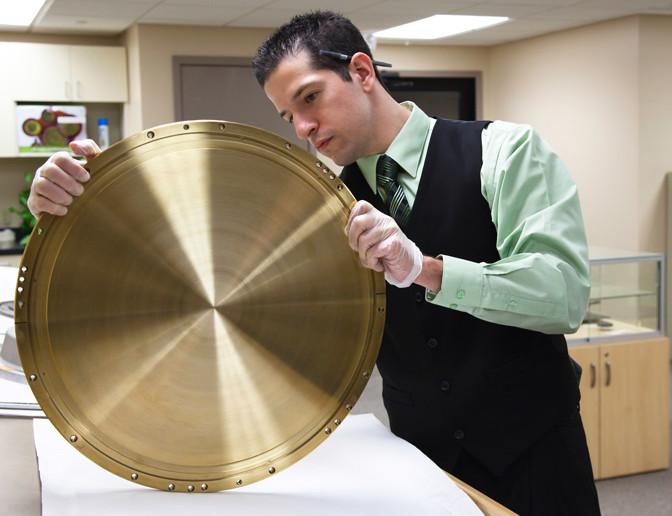
BONDING TECHNIQUES
We also provide bonding services to adhere the sputtering targets to the backing plates. Indium and Silver-Epoxy bonding agents are chosen as they provide high electrical and thermal conductivity, channeling heat and charge build-up away from the target. They also protect the target-backing plate interface from diffusion and alleviate stress caused by differing thermal expansion at the interface by thermal creep.
There are different bonding techniques employed by LTS, which depends from material to material. Some of these bonding services are listed below:
Cold bonding: Cold bonding is an environmentally friendly process of joining two materials or parts without heating them. Instead of heat, an adhesive is used to form the bond between the materials. Cold bonding can be a viable alternative when welding operations cannot be performed due to heat-sensitive conditions. Cold bonding does not require special equipment or post heat treatment. The adhesive that is used ensures perfect contact, fills the void between surfaces as well as increases its load-bearing capacity.
Diffusion bonding: Diffusion bonding is a solid-state welding technique, used to join similar or dissimilar metals which operates on the principle of solid-state diffusion. At high temperature and pressure, atoms of two solid metallic surfaces disperse overtime. Diffusion bonding is highly used to join high strength refractory metals used for nuclear or aerospace applications. Diffusion bonded joints exhibit high quality with no porosity in the interface. This process requires the bonding surfaces with a good surface finish, in contrast to hot isostatic pressing, to reduce surface contamination. Titanium, Beryllium, zirconium Aluminum, Copper, Gold, Inconel, Nickel, Silver, Stainless Steel, can be diffusion bonded.
Explosion bonding: Explosion bonding is another solid-state welding technique, and the joints are achieved by using chemical explosives to cause metals to fuse. Controlled detonation of explosives is utilized so that the force of the explosion creates plasma, which helps remove the impurities and make the weld a clean joint. Explosion bonding is mostly used to clad carbon steel plates with a thin layer of corrosion-resistant material. Limited geometries such as plates, tube sheets can be bonded using this process. Explosion bonding requires extensive knowledge of explosives for safety reasons and proper joint. If in case excessively high energy is used, metals can melt together, which creates brittle intermetallics, whereas if insufficient energy will result in improper joint. So high expertise is required to obtain high-quality products. Explosion bonding has advantages such as strength, versatility, layering, and cold welds.
Plasma activated sinter bonding: Plasma Activated Sinter (PAS) Bonding technique is a rapid sintering process known for it is high sintering speed, high reliability, and safety. This process is adopted for the materials for which the conventional sintering methods cannot be used. This process densifies materials quickly at high temperatures with the application of pulsed electric power. PAS device has a controlled vacuum chamber as well as equipped with a mechanical unit that applies uniaxial pressure, electrical components required for the application of the pulsed, and steady current. The application of pulsed voltage for a short period, then subsequent heating and densification, is carried throughout the consolidation process. Many oxides, nitrides, transparent ceramics, materials that are difficult to sinter, adopt this process.
BONDING AGENTS
Indium: Indium is the most widely used as the bonding agent for sputtering targets because of its high thermal conductivity among all available bonds and its very high efficiency to draw heat away from the target. Since indium has high malleability, the softer solder allows different expansion rates of the target and the backing plate, which reduces the cracking caused by the mismatch of the thermal expansion coefficients. One of the drawbacks of indium is its low melting temperature. Indium melts at 156.6 °C, and temperatures in excess of 150 °C cause the bonds to melt and fail.
Silver-Epoxy: Silver-epoxy is ideal for bonding non-metallic sputtering targets and the copper backing plate. This finds extensive use in bonding semiconductor chips, integrated monolithic circuits, diodes, transistors, and other components in the thin film.
Elastomer: Elastomer is an alternative bonding method that offers higher temperature operations compared to indium bonding. Elastomer bonds are recommended for bonding low melting point target materials as well as temperature-sensitive compounds and targets having low density. This bond does not absorb moisture and is highly suitable for handling cycles between vacuum and atmosphere.
Click to see more about backing plates.